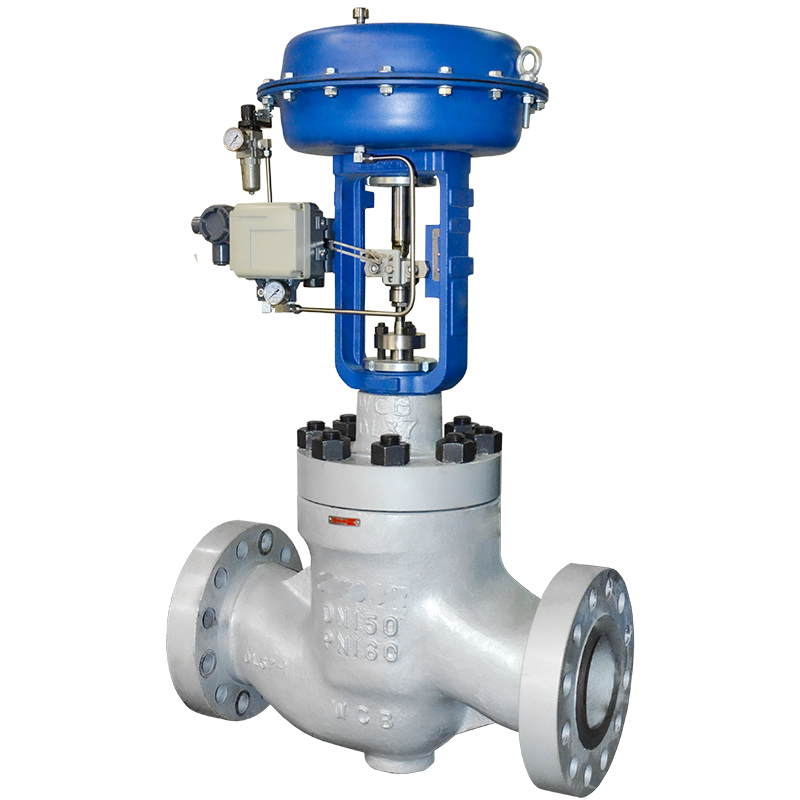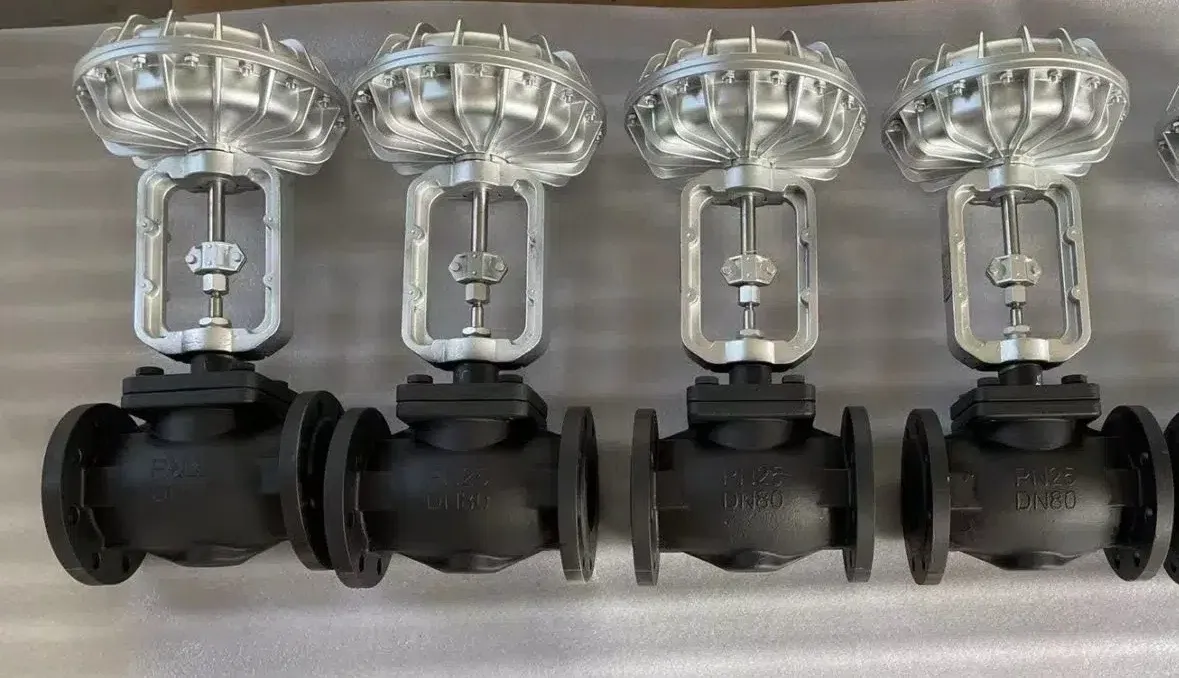
In the modern process control industry, precision, reliability, and efficiency are key factors in achieving optimal system performance. Control valves, acting as the final control element in automated systems, play a critical role in regulating media flow, pressure, and temperature. Among these, the pneumatic on-off globe control valve stands out as a versatile solution for demanding applications involving gases, vapors, and liquids.
Pneumatic on-off globe control valves offer both tight shut-off functionality and precise control. Their design allows integration with a wide range of accessories, while their modular construction supports operational flexibility and field customization. From high-pressure steam systems to corrosive chemical applications, these valves have earned a trusted place in various industrial sectors.
This article explores the structural design, working principles, key components, and application scenarios of pneumatic on-off globe control valves, along with their major advantages and considerations for use.
A pneumatic on-off globe control valve is a linear motion valve operated by a pneumatic actuator. It is primarily used to either fully open or fully close the flow of process media, but can also be equipped with modulating capabilities if required. The actuator receives air signals—typically from a solenoid valve or a control system—and converts them into mechanical movement, opening or closing the valve seat in response.
The globe-style valve body provides excellent throttling capabilities and high shut-off integrity, making it suitable for both isolation and control functions in critical pipelines.

The body is the core pressure-retaining part of the valve. It houses the valve seat and plug, forming the path for fluid flow. In a typical globe valve design, flow enters below the seat and exits above it, allowing for better sealing and easier actuator control. However, variations such as angle globe valves (with 90° outlet orientation) or oblique globe valves (angled internals) are available to suit different pipeline configurations.
Globe valve bodies are often cast or forged and made from durable materials like:
Carbon steel – suitable for general service conditions.
Stainless steel – ideal for corrosive fluids.
Cast iron – economical option for low-pressure systems.
Special alloys – such as Hastelloy, Inconel, or Monel, used in high-temperature and aggressive chemical applications.
Design tip: When globe valves are installed on horizontal pipelines, residual liquid can accumulate and cause corrosion. To avoid this, angle or oblique globe valves are recommended for drainability and self-cleaning.
The pneumatic actuator converts compressed air pressure into mechanical motion to open or close the valve. There are two common types used with globe valves:
Diaphragm actuators – provide a large surface area for lower pressure air to act on, offering smooth and steady motion.
Piston actuators – handle higher air pressure and provide faster response and more force, ideal for larger or higher-pressure valves.
Unlike rotary actuators used in ball or butterfly valves, globe valves require linear motion actuators, which move the valve stem up and down to control flow.
Actuators can be double-acting (air to open and air to close) or spring-return (fail-open or fail-close), depending on safety and control requirements.
Pneumatic globe valves are designed based on a modular concept, allowing integration of various accessories for enhanced functionality:
Handwheels – for manual override in case of air failure.
Limit switches – to signal open or closed positions.
Solenoid valves – to control air supply in response to electrical signals.
Positioners – for modulating control where fine adjustments are needed.
Metal bellows seals – for applications involving hazardous fluids, ensuring leak-tight stem sealing.
Thermal extensions – to protect actuators from high process temperatures.
In an on-off configuration, the valve is either fully open or fully closed. The control signal—often from a solenoid valve triggered by a PLC or remote control system—directs compressed air into the actuator chamber. This drives the actuator piston or diaphragm, which in turn moves the stem and plug. The valve plug seats tightly against the seat for Class VI shut-off, or lifts off to allow full flow through the body.
In more advanced applications, a positioner can be installed to convert this setup into a modulating control valve, allowing partial opening based on analog control signals for precise flow regulation.
Pneumatic on-off globe control valves offer a variety of operational and mechanical benefits:
Equipped with PTFE inserts or precision-machined plugs, these valves can achieve Class VI shut-off, minimizing leakage and ensuring safety in high-risk environments.
The modular design enables easy field customization. Accessories can be added or replaced without extensive downtime or reengineering.
Valve bonnets and bodies are often constructed from the same material, ensuring consistent thermal expansion behavior and improved reliability under fluctuating temperatures.
Robust construction and wear-resistant materials allow for prolonged service life, even under harsh conditions such as high pressure, high temperature, or corrosive media.
Operators can choose from fail-safe (spring return) or double-acting actuators depending on system safety needs.
Globe valves have a straightforward construction. Routine maintenance tasks—such as replacing seals, plugs, or diaphragms—can be done on-site with minimal downtime.
Pneumatic on-off globe control valves are used in a wide range of industries and processes, including:
Oil and Gas: For fuel, gas, and steam line isolation or pressure control.
Chemical Processing: For corrosive fluids where precision and tight shut-off are critical.
Power Plants: In boiler feedwater, condensate, and steam control systems.
Pharmaceuticals: For hygienic flow control in sterile environments.
Food and Beverage: In CIP (Clean-In-Place) systems and utility lines.
HVAC Systems: For heating, cooling, and ventilation control.
Proper installation of a pneumatic globe valve ensures long service life and safe operation:
Orientation: Typically installed with flow direction from below the seat for easier operation.
Steam Service: Install thermal extensions and ensure condensate removal. Position the actuator downward and connect pressure sensing lines from the base of the pipe to prevent overheating.
Gaseous Media: Pressure taps and sensing lines should be taken from the top of the pipeline to prevent contamination with liquid condensate.
Accessibility: Provide enough space for future actuator removal, accessory adjustments, and manual override access.
To keep pneumatic globe valves operating at peak efficiency:
Inspect actuators for air leakage or diaphragm wear.
Clean valve internals regularly in dirty or particulate-laden systems.
Check seat and plug alignment for sealing effectiveness.
Lubricate stem and guide bushings per manufacturer recommendations.
Calibrate accessories such as limit switches and positioners periodically.
The pneumatic on-off globe control valve is a powerful tool in the arsenal of process control equipment. Its robust design, precision operation, and modular flexibility make it ideal for a wide range of industrial applications. Whether your system requires tight shut-off, reliable automation, or adaptability to harsh environments, these valves deliver consistent performance and reliability.
When properly selected, installed, and maintained, a pneumatic on-off globe valve offers years of trouble-free operation, helping facilities reduce downtime, improve safety, and optimize process efficiency.